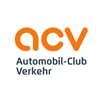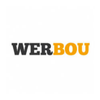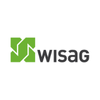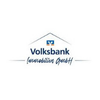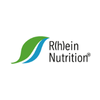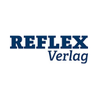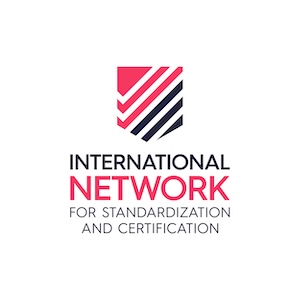Quality Standards – Quality Seals – Certificates
Welcome
We develop various quality standards based on scientific research and offer companies the opportunity to be certified according to these standards by our partners in various countries.
Companies can use the results of certification, quality seals, and certificates to attract new customers and employees, thereby increasing their sales and profits.
Take the next step with our partners toward higher quality, increased sales and profits, and motivated employees.
Scientifically – Comparability – Worldwide
What can our Quality standards do for you?
Our certifications are based on representative customer surveys and provide you with a comprehensive evaluation in addition to a marketing package to improve customer service in the long term.
Our certifications are based on representative employee surveys and provide you with a marketing package and a comprehensive evaluation to help you improve your attractiveness as an employer in the long term.
Send us a message to find out more
mail@quality-standard.com
+1 (800) 555 555
Standardization – Certificates – Quality Seals
Learn more about Quality Standards
Numerous studies show that quality standards help companies become even more successful
People today crave more honesty and openness from businesses. Consumers are more savvy, and companies are under intense scrutiny from the public, investors, and regulators. As a result, standards have become an important building block for quality and trust.
They keep the marketing hype separate from the quality of what’s being sold, and, across industries, they drive continuous improvement. As technology advances and the volume of trade between the world’s nations increases, the significance of quality standards will continue to grow.
Groups like DIQP and USIQ exemplify the concept that quality does not mean only producing exactly one thing that is “good,” but it means producing the same thing over and over again, reliably, ethically, and transparently. It’s about creating a system of continual excellence.
While quality standards possess many great merits, they are not without their problems. It’s critical that they are recognized so that organizations can plan accordingly.
- Cost and Time – Certification is expensive, especially for small businesses. That includes audits and documentation, and sometimes new training or systems.
- Complexity – Some standards are technical and can be quite complex, requiring you to know an expert if you want to paraphrase them correctly.
- Keeping Up to Date – As industries change, so do their standards. Being compliant is a continuous challenge, and staying in line is an adaptation.
- Credibility Issues – Standards are not created equal. Some organizations produce weak or self-serving standards, and those standards don’t necessarily equate with quality.
- Even a Seal – A certification is no assurance of perfection. Organizations must ensure quality is maintained on an everyday basis, not just during audit time.
- Risk of Misuse – There is a risk of some businesses misusing Logos/Claims, which may lead to confusion and a lack of trust. That’s why third-party verification and transparency are vitally important.
Despite these problems, the net effect of quality standards is beneficial. When done right, they help to deliver better products, happier customers, and more responsible organizations.
Creating a quality standard is not as simple as penning down a couple of rules. It involves research, collaboration, and careful review. The goal is to be able to say that the standard is fair, practical, and effective for all involved.
Defining Purpose and Scope
The first step is to make decisions about what the standard will be. Whether it’s for a specific product, an industry, or a service? The team of people working on the standard identifies the primary goals, such as enhancing safety, improving customer satisfaction, or being environmentally responsible.
Involving Stakeholders
Quality standards don’t emerge in a vacuum. Experts, companies, consumer groups, and government representatives all have a role to play. This will ensure that the standard is representative of the needs and challenges of the real world. All the people who are going to be affected by the standard have input into the development of the standard.
Research and Drafting
Once you have a clear scope, the next thing you’ll need to do is conduct the research and write the criteria. This covers the study of best practices, laws in place, and technical data. The team calculates what to measure and how to measure it. For example, if the standard is associated with customer service, it could include response time, customer complaint handling, and employee training.
Testing and Feedback
Before the standard is finalized, it’s tested or reviewed by organizations that would use the standard. They provide feedback on “Is this realistic? Is it fair and easy to apply?” The challenge is to make sure that the standard doesn’t just work on paper.
Approval and Publication
After some revision and agreement between the stakeholders, the standard is finally approved and published. It becomes a document to which companies can refer to prove they meet the expected quality level.
Certification and Review of Continuing
After a standard has been created, the companies can apply for certification. This usually involves some form of a separate audit or evaluation to ensure they qualify. Certification isn’t forever; it’s reviewed periodically to ensure that organizations are maintaining their performance. Standards are revised periodically to keep pace with new technology, changing market conditions, or environmental requirements.
Getting a standard can take some time, but once it’s done, it will be a powerful and robust tool that can help everyone.
Quality standards, sometimes thought of as things only big businesses worry about, on the contrary, affect everyone, from small businesses and customers to the environment. Let’s see how they are useful in the real world.
Improving Trust and Credibility
When a company satisfies a recognized standard, it sends a clear message: “You can trust us.” Certified companies have an advantage, as consumers are more likely to shop from them, as they know that an independent body has certified the company’s claims. This trust often results in better relationships with customers and brand awareness.
Improving Consistency
Standards are used to ensure that products and services are being produced and/or provided in the exact same way every single time. Whether it’s the taste of your favorite coffee or the consistency of your internet connection, quality standards help to ensure performance remains consistent. It is this consistency that provides an element for the return of customers.
Striving for Continuous Improvement
Certification is generally conducted as a series of surveys, audits, and reviews. The following activities are intended to help companies identify improvement opportunities: In the end, this will lead to better processes, happier employees, and happier customers.
Reducing Errors and Waste
By following tried-and-tested methodologies and correct practices, businesses can eliminate the possibility of mistakes, reduce defects, and minimize rework. This saves money and time and improves quality. Fewer errors equals fewer complaints and a more streamlined operation.
Advancing Ethical and Sustainable Production
Many existing standards incorporate social and environmental criteria. They encourage responsible business, from fair labor policies to reducing carbon emissions. This is not only great for the planet, but also attractive to consumers who prioritize sustainability.
Widening Market Access
Some customers, especially in government or international commerce, insist that suppliers’ functional products be certified to some standard. Developing Approval for Recognized Quality Standards Can Create New Markets and Partnerships. It’s generally the difference between getting listened to and being ignored.
Boosting Employee Morale
When quality is taken seriously, employees have pride in their workplace. Notice how they are aware that their efforts are for a worthwhile cause. Certification also means that management is committed to their actions and continually seeks to improve.
Providing Customers with More Choices
From the customer’s perspective, quality seals are shortcuts to trust. They help people make confident choices in a world full of options. The sight of a familiar seal on a product or service is the assurance to buyers that it meets a verified standard of quality.
There are thousands of standards for quality parameters across various industries, but two organizations that have contributed significantly are the Deutsches Institut für Qualitätsstandards und -prüfung for Germany and the United States Institute for Quality in the U.S.
DIQP – Deutsches Institut für Qualitätsstandards und -prüfung
DIQP creates standards that will enable businesses to gain trust from their customers and employees. It looks at the quality of service, the quality of the employer, and sustainability. For example:
- Top Employer – Recognizes companies that offer great places to work and employee satisfaction.
- Top Quality – Evaluates customer service via the use of surveys, mystery tests, and management audits.
- Family-Friendly Employer – Features employers that are family-friendly and work-life balanced.
DIQP standards are created through an independent process and are verified by outside certification agencies. This assures neutrality and fairness and enhances the credibility of each seal.
USIQ – United States Institute for Quality
USIQ is a group that advocates for the same values in the United States. It provides quality seals that certify companies for quality, trust, and sustainability. Some of its more well-known standards are:
- Top Employer – For excellence of workplace culture.
- Family-Friendly Employer – Features employers that are family-friendly and work-life balanced.
- Top Service – For outstanding performance in customer service.
Both DIQP and USIQ are based on an open process. Their claims are not self-claimed, but verified with surveys, data, and results. This means that when a business has one of its seals, it really is of measurable quality.
A quality standard is a set of ideals or rules that define what “good quality” means for a product, service, or process. A recipe is a guide for what you have to do in order to get a predictable and repeatable outcome.
For example, if you buy a car, you are expecting it to be safe, efficient, and durable. The car manufacturer adheres to some quality standards to ensure these expectations are met, from the construction of the parts to the way the vehicle is tested before it gets to you.
Quality standards can be applied to just about everything: food production, customer service, environmental protection, healthcare, education, and more. They ensure that organizations maintain a level of performance that satisfies the expectations of their customers and regulators.
In a nutshell, a quality standard is a promise of consistency, a way of saying, „We’ve met this agreed level of excellence.“
Our Quality standards make your business more successful
Why Choose International Network for Standardization and Certification?
Through our network, we survey millions of employees and customers worldwide, helping companies become more successful based on the latest scientific research.
Passionate – Comparability – Professional
Some Companies That Trust Our Network
Companies around the world rely on our partners quality standards to attract new customers and employees while improving their quality.
